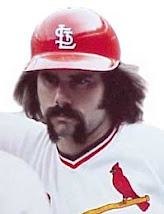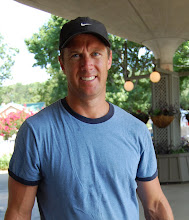 Last week Phil Knight and his team of geniuses at Nike hit a hole in one with their controversial new Tiger Woods commercial. The ad was released just a day before Tiger’s return to competitive golf at The Masters. It features the voice of the (the subterranean) Earl Woods admonishing his son, Tiger. Everyone in the pop culture world, not just the sports world, was discussing the effect of the somber father rebuking his son for getting caught with his “hands” in the metaphorical cookie jar.
Last week Phil Knight and his team of geniuses at Nike hit a hole in one with their controversial new Tiger Woods commercial. The ad was released just a day before Tiger’s return to competitive golf at The Masters. It features the voice of the (the subterranean) Earl Woods admonishing his son, Tiger. Everyone in the pop culture world, not just the sports world, was discussing the effect of the somber father rebuking his son for getting caught with his “hands” in the metaphorical cookie jar. Warm fuzzzies be damned, the ad was brilliant. It dominated conversation on the eve and throughout all of Masters Week. Immediately the media focus shifted away from Tiger’s transgressions, as well as his return to competitive golf, and onto the advertisement itself. The subsequent discussions became an unbuyable amount of Nike publicity and chatter on TV, radio, internet, around the water cooler and at Starbucks. In fact the commercial and Tiger’s excellent performance, literal and hopefully not figurative, in Augusta has essentially shut the door on the revelations that stemmed from the “Thanksgiving Night Massacre.” Of course, that door is neither hermitically sealed nor dead-bolted, but it is at least temporarily closed.
In a conversation while watching the final round of the Masters, a friend complained to me, “Nike should not have done that. They should not have taken Earl Woods’ voice from some secret vault and made Tiger look so bad.” (The recorded quotes are actually from a recording of Earl speaking to/about Tiger’s mother, Tilda, in 2004). My friend was not taking an unreasonable position. Nor is the position of “Thank God, Nike put the cheater in his place,” unreasonable. So why did Nike “Just Do It?” Because Nike could. Because Tiger Woods, while inseparable from Nike Golf, is no longer the “boss” of Nike Golf.
Even with his admitted confessions, a vulnerable Tiger is hard to fathom. Nike Golf and Tiger enjoyed a meteoric, symbiotic rise in the sports world. He became the company’s pitchman when he was just 20 years old, way back in 1996, before Nike was really in the golf business. Essentially, Tiger Woods built Nike Golf.

Quickly, as each entity rose to prominence, the brands Nike Golf and Tiger Woods became co-dependent and inseparable. It is impossible to visualize the golfer without the swoosh and the swoosh without the golfer. Just take a look at Tiger on the course. Unlike other players on the PGA Tour, he does not bedazzle his wardrobe like the front quarter panel of a NASCAR vehicle. When you see Phil Mickelson, he has KPMG, Callaway and Barclays all over his “quarter panels.” The only logos on Tiger are simply Nike, be it the famous swoosh or his private label TW trademark. During tournament coverage, he has never been swathed with a Gatorade lightning bolt, or a Buick crest. Furthermore, Tiger’s equipment is also predominately Nike. While other players may play a Titleist ball with Callaway clubs, Woods hits a Nike ball with Nike clubs while wearing a Nike glove, a Nike shirt, a Nike hat, a Nike belt...
The relationship has been mutually and ridiculously profitable. Despite a slumping economy for luxury goods like golf equipment, Nike’s golf sales are over $680 million annually and maintain a huge slice of the golf equipment and apparel pie. For his endorsements and influence, Nike pays Tiger upwards of $20 million a year. If under any circumstance, Tiger left Nike and became a front man for Callaway or Ping, Nike would have to recreate the entire brand. To reposition (hip Madison Avenue terminology), would take a lot more than a few kitschy thirty second spots during the John Deere Classic.
More than the golf icon’s carnal relationships changed in the aftermath of the Thanksgiving Night Massacre. (In review, Tiger’s grill allegedly stopped a Nike Golf club swung by his wife Elin, and moments later, a palm tree and/or fire hydrant stopped the grill of the Woods’ family Escalade). It was at exactly that instant that Phil Knight and his Nike geniuses started to become the boss of the relationship again, and Tiger became the submissive employee. (And, if you read and believe some of Tiger’s mistresses leaked texts, Tiger being submissive is really ironic). Capturing the moment, Nike flexed its muscle (figurative again) and quickly produced the spot that completed the fall from, “Tiger, you da man,” to Tiger demeaned.
And, what will the ad do for sales? Whether consumers want a commercial that positions Tiger 2.0 in an even less appealing light, or consumers believe that Nike is being distasteful and manipulative, the ad is already serving its purpose: get the brand name in conversation and subsequently boost sales. Meanwhile, Nike Golf and Tiger Woods remain indivisible. No matter whose side you take, you are supporting Tiger Woods or Nike Golf. Therefore, you are supporting one in the same.
In golf, it’s all about execution, and Nike’s execution was brilliant. Like it or despise it, a golf fan’s appropriate response to the commercial is to offer up an understated golf-clap and say, “Nice shot.”




